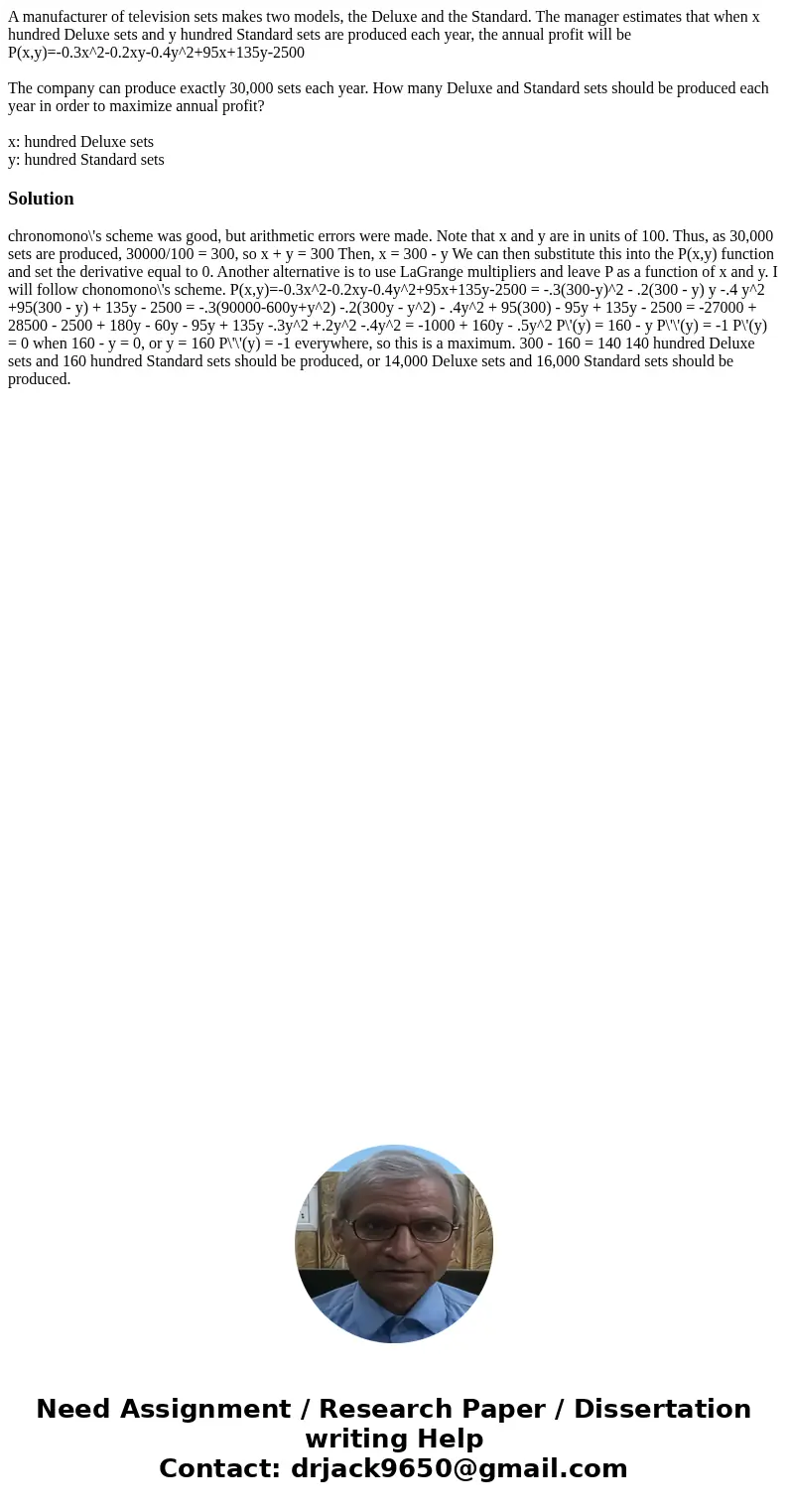A manufacturer of television sets makes two models the Delux
A manufacturer of television sets makes two models, the Deluxe and the Standard. The manager estimates that when x hundred Deluxe sets and y hundred Standard sets are produced each year, the annual profit will be
P(x,y)=-0.3x^2-0.2xy-0.4y^2+95x+135y-2500
The company can produce exactly 30,000 sets each year. How many Deluxe and Standard sets should be produced each year in order to maximize annual profit?
x: hundred Deluxe sets
y: hundred Standard sets
P(x,y)=-0.3x^2-0.2xy-0.4y^2+95x+135y-2500
The company can produce exactly 30,000 sets each year. How many Deluxe and Standard sets should be produced each year in order to maximize annual profit?
x: hundred Deluxe sets
y: hundred Standard sets
Solution
chronomono\'s scheme was good, but arithmetic errors were made. Note that x and y are in units of 100. Thus, as 30,000 sets are produced, 30000/100 = 300, so x + y = 300 Then, x = 300 - y We can then substitute this into the P(x,y) function and set the derivative equal to 0. Another alternative is to use LaGrange multipliers and leave P as a function of x and y. I will follow chonomono\'s scheme. P(x,y)=-0.3x^2-0.2xy-0.4y^2+95x+135y-2500 = -.3(300-y)^2 - .2(300 - y) y -.4 y^2 +95(300 - y) + 135y - 2500 = -.3(90000-600y+y^2) -.2(300y - y^2) - .4y^2 + 95(300) - 95y + 135y - 2500 = -27000 + 28500 - 2500 + 180y - 60y - 95y + 135y -.3y^2 +.2y^2 -.4y^2 = -1000 + 160y - .5y^2 P\'(y) = 160 - y P\'\'(y) = -1 P\'(y) = 0 when 160 - y = 0, or y = 160 P\'\'(y) = -1 everywhere, so this is a maximum. 300 - 160 = 140 140 hundred Deluxe sets and 160 hundred Standard sets should be produced, or 14,000 Deluxe sets and 16,000 Standard sets should be produced.
 Homework Sourse
Homework Sourse